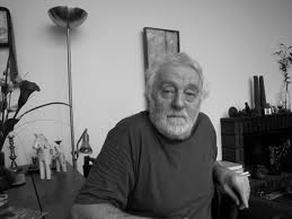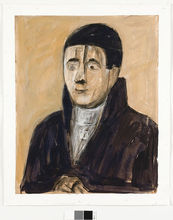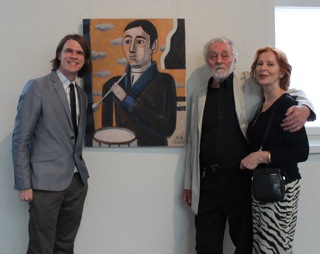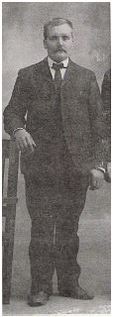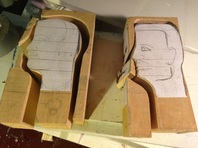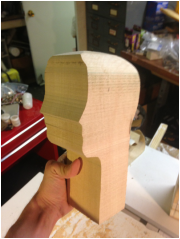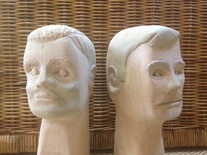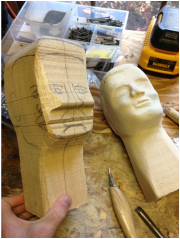History of VAIVAISUKOT (Pauper Statues)
“Especially in Ostrobothnia, Central Finland, many churches or bell towers used to be – and some still are – adorned with a human figure carved of wood for collecting money for the parish poor. These pioneers of social welfare often stood under an ornamental shelter and could be accompanied with a catchphrase, such as: “He who has pity on the poor, lends to the Lord.” Most of the paupers are from the 19th century, and many of them were modeled after veterans of the Finnish War (1808–09), waged during the Napoleonic Wars. Bartimaeus of Hauho, presumed to be the oldest wooden pauper, probably dates all the way back to the late 17th century. Wooden paupers are still made on occasion, and a few parishes have had younger paupers join the crew.
Some of the oldest paupers seem to draw from the German tradition of ecclesiastical wood carving, some of the more recent ones have clearly sought their roots from the Ostrobothnian shipbuilding and crafts tradition. The tradition of wooden paupers doesn’t appear to exist anywhere else in the world, so we are dealing with a unique phenomenon even on international scale. There are altogether around 180 known wooden paupers in Finland, of which 145 still remain – one of them a pauperess who works for the Soini parish. Some have disappeared in the course of time, some have gradually become worse for wear and been discarded. Many have been attacked in hopes of loot. Nonetheless, a large number of paupers still remain in service, collecting money for church social and mission work.”
--Excerpt from the Association to Save the Wooden Paupers - http://www.vaivaisukot.fi/eng/index.htm
Some of the oldest paupers seem to draw from the German tradition of ecclesiastical wood carving, some of the more recent ones have clearly sought their roots from the Ostrobothnian shipbuilding and crafts tradition. The tradition of wooden paupers doesn’t appear to exist anywhere else in the world, so we are dealing with a unique phenomenon even on international scale. There are altogether around 180 known wooden paupers in Finland, of which 145 still remain – one of them a pauperess who works for the Soini parish. Some have disappeared in the course of time, some have gradually become worse for wear and been discarded. Many have been attacked in hopes of loot. Nonetheless, a large number of paupers still remain in service, collecting money for church social and mission work.”
--Excerpt from the Association to Save the Wooden Paupers - http://www.vaivaisukot.fi/eng/index.htm
ANTTI OJALA
I traveled to Finland in 2005 and was introduced to the work of my relative, Antti Ojala, a painter who has used Finnish pauper statues as subject for his paintings since the mid-60s. Pauper statues or vaivaisukot, are wooden boxes carved in the likeness of beggars. They date back to the 1808-09 wars, but can still be found out side of many rural churches in Finland today. In 2014, I traveled back to Finland to attend a retrospective of Antti's work and to see his paintings on display as part of an exhibit featuring 42 statues from all over Finland.
PUPPETRY
As a puppet designer, I gravitate to these figures for their theatrical possibilities. SISU is in the Heart will include a "play within a play" to tell the very personal story of my family and my great-grandfather's immigration to the U.S. in 1900. I am carving the heads and Antti Ojala will paint the figures in the likeness of our mutual ancestors, Johannes Ojala (my great-grandfather) and Kustaa Ojala (his grandfather). Four professional puppeteers will manipulate the large rod puppets during the performance.

